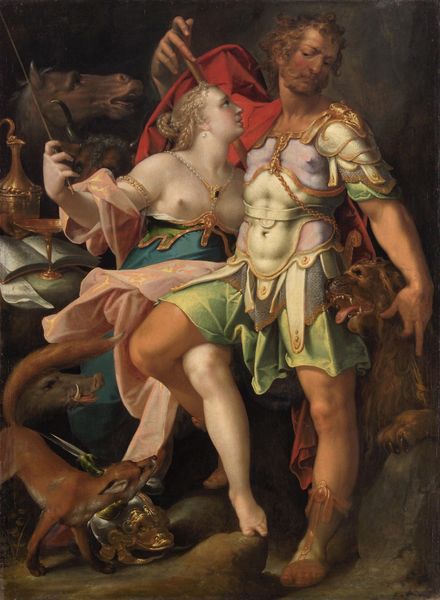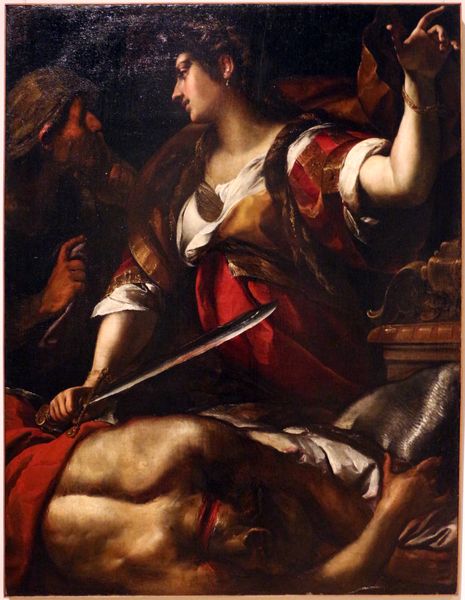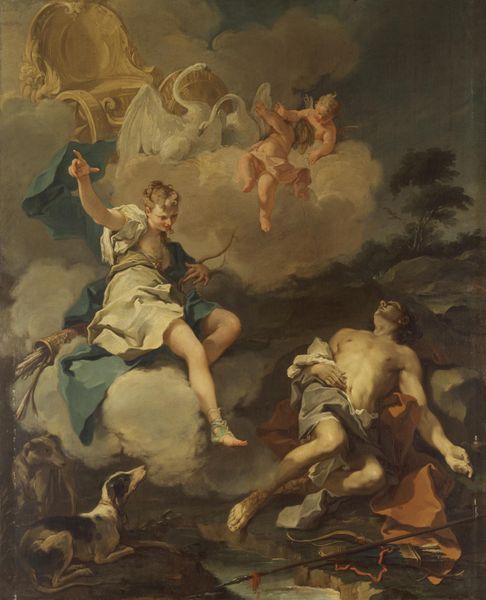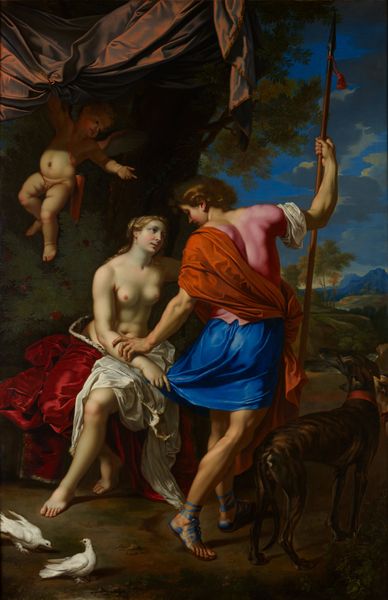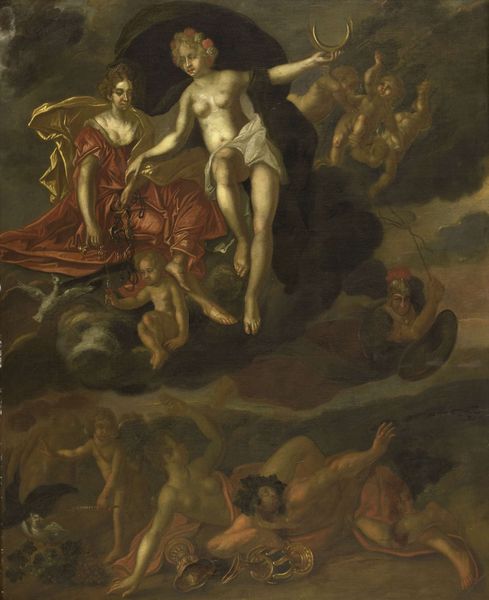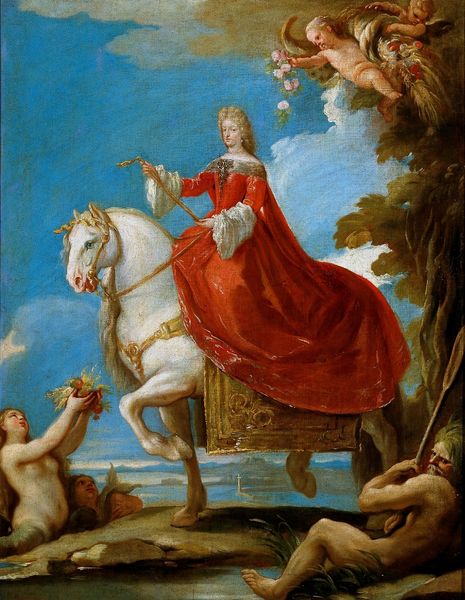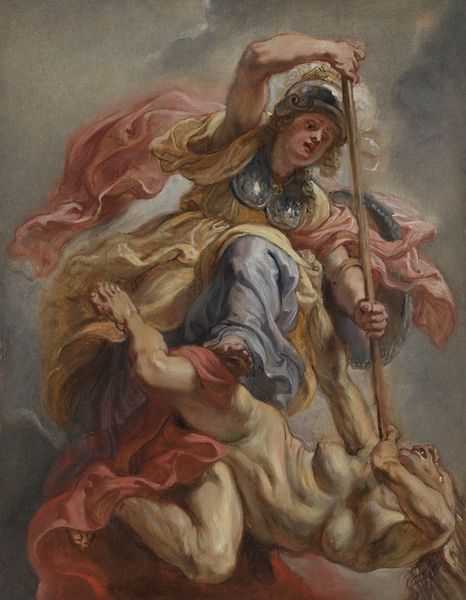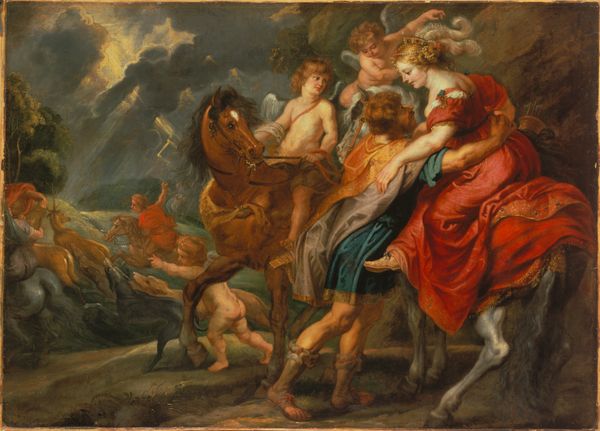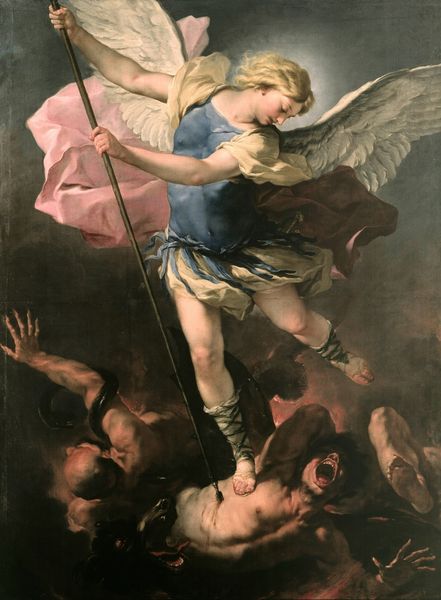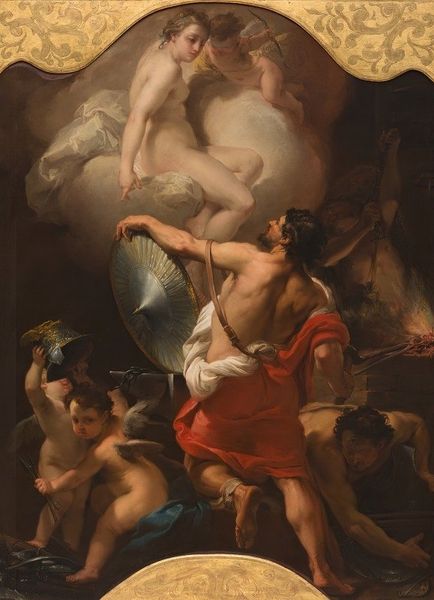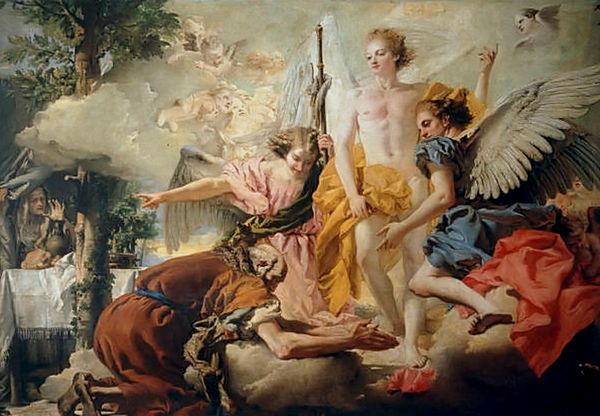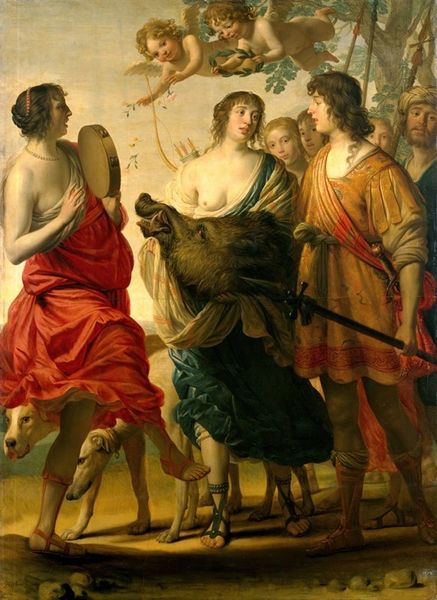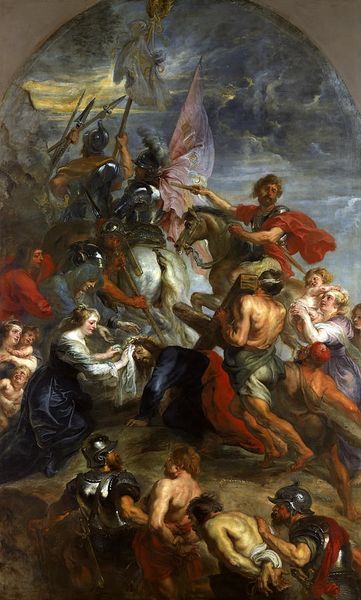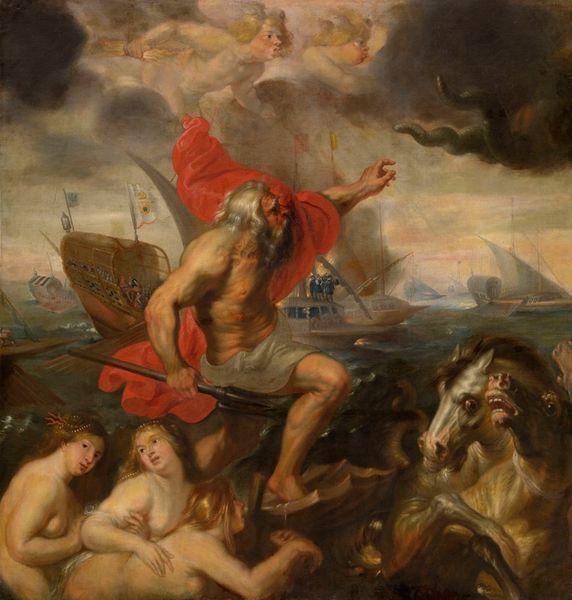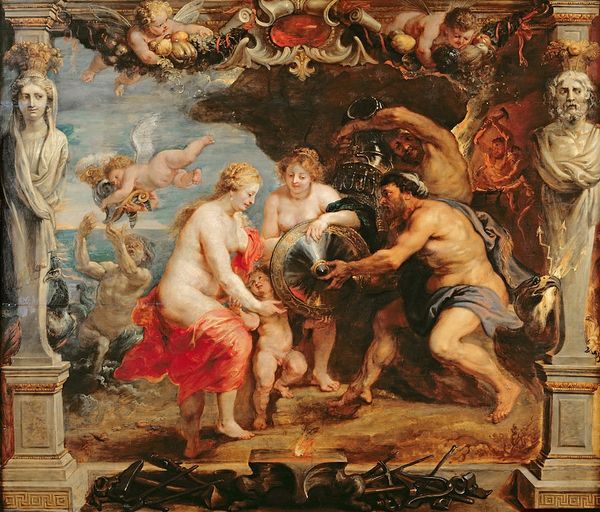
oil-paint
#
allegory
#
oil-paint
#
mannerism
#
figuration
#
history-painting
#
nude
Copyright: Public domain
Curator: Here we have Bartholomeus Spranger's "Minerva as the Victor over Ignorance" from 1591, rendered in oil paint. Quite a mouthful! Editor: Yes, a bit busy too, visually. My first impression is one of almost aggressive sensuality—the textures of the flesh juxtaposed with gleaming armor. There’s a strange tension created by the contorted figures and opulent drapery. Curator: Indeed, the Mannerist style is evident in the elongated bodies and exaggerated poses. Note how Spranger uses color and light to guide the eye through a complex network of allegorical figures. The cool pallor of Minerva contrasts sharply with the earthy tones of ignorance underfoot. Editor: And what are we to make of those fleshy putti hovering above? Are they complicit in Minerva's triumph, or simply witnesses to the brutality? I'm struck by the materiality of the paint itself, its almost tactile quality suggesting a tension between the ideals of classical heroism and a more visceral reality. What’s the significance of Minerva standing over the slumped male figure at the bottom center of the painting? Curator: That is Ignorance. This painting is an allegory, a didactic device popular during the late Renaissance. Minerva, the Roman goddess of wisdom and strategic warfare, stands victorious, her spear a symbol of reason overcoming the darkness of ignorance. The surrounding figures, a combination of human likenesses, some with the wings of angels, add to the drama of this scene. We can read the female figure with the book on the lower right of Minerva, or strategic warcraft and intelligence, and another soldier on the lower left. Spranger composed Minerva with elements of grace and majesty by implementing contrapposto, or the twist of her torso. This element lends an almost regal quality to the work. Editor: Still, there’s something uncomfortable about it. The idealization of Minerva clashes with the vulnerable presentation of the figures crushed beneath her. Is Spranger critiquing power even as he celebrates it? How was this work originally intended to function—did it celebrate courtly intellectual life, or challenge the status quo? Were there preliminary sketches made on paper for a piece such as this or was the oil paint medium directly applied? The canvas and stretchers alone… there are several considerations. Curator: I think the piece does both. Through sophisticated arrangements of his figures and mastery of applying paint, Spranger urges viewers to aspire to a more informed society. It remains a compelling meditation on the ongoing battle between knowledge and ignorance. Editor: Yes, ultimately, even while celebrating the intellectual triumph of Minerva, Spranger's work reminds us of the complexities inherent in power dynamics, intellectual labor, and their visual representations.
Comments
No comments
Be the first to comment and join the conversation on the ultimate creative platform.
